It looks like a creature Luke Skywalker might ride en route to saving the galaxy, but the takin is not a fictional beast. Let’s take a look at this large, mysterious mammal that roams Asian mountains and bamboo thickets.
A frequent conservation complaint is that most people only know and care about the largest and most charismatic of creatures: the elephants and giraffes, the lions and tigers and bears. Most of the world’s species remain ignored. Conservationists are forced to admit that few know or love the great diversity of invertebrates, microbes and fungi that share our planet.
In reality, even many of the largest mammals remain out of sight and out of mind. The takin – which can reach weights up to 770 pounds (350 kg) – is arguably the largest terrestrial mammal that lives in obscurity. While it is the national mammal of Bhutan, you are unlikely to find it in a cartoon, as a sports mascot or in a popular nature documentary.
What is a takin? First, a little taxonomy. It’s in the mammalian family Bovidae that also includes antelopes, oxen, sheep and goats, among others. The bovids include some of the most familiar animals on earth, including common barnyard animals like cattle. Wild bovids like bison and wildebeest are also widely recognized.
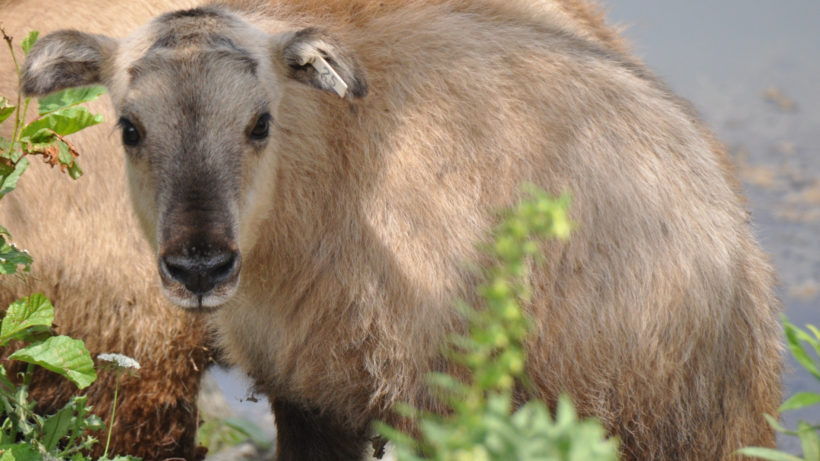
But despite being incredibly cool and even beautiful (at least to me), many of these hoofed mammals remain obscure. The wonderful variety of African antelopes – kudu and eland and duiker – play background roles in documentaries, if they appear at all. A Twitter feed and game by biologist Matt Davis, Underrated Ungulate, seeks to bring attention to many of these species.
If there’s any hoofed mammal that deserves the limelight, it’s the wildly bizarre takin. Almost any writer and even biologist confronting the takin seems to describe it as a creature composed by assembling parts of other animals. Many accounts describe it a creation of Dr. Seuss. Taxonomists call it a “goat antelope” and others call it a “gnu goat.” Even famed biologist George Schaller describes it as a “bee-stung moose” due to its super-sized schnoz.
There’s nothing else quite like it. It probably most closely resembles a less-shaggy musk ox, but it actually is more closely related to wild sheep.
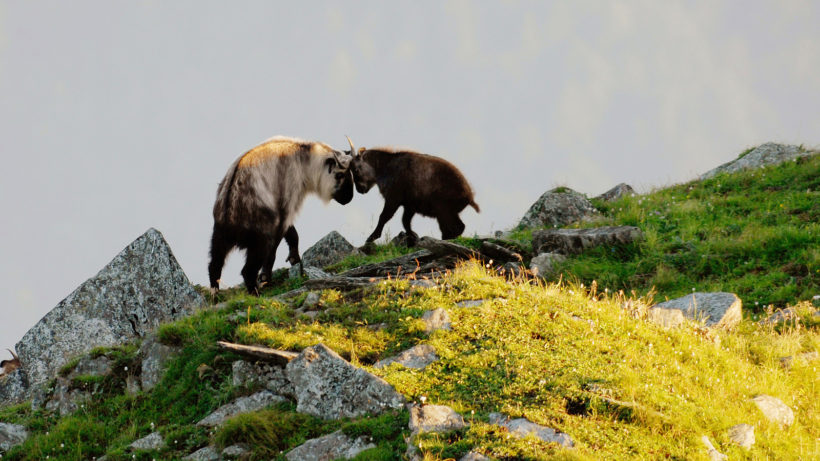
The takin is adapted to its mountainous environment in Asia. While its range includes many countries – including parts of India, Bhutan and Myanmar – most naturalists and hard-core mammal watchers encounter the species in China. Strangely enough, there it shares its range with one of the most beloved and well-known of large mammals, the giant panda. In fact, one of the first documented instances of a giant panda eating meat is trail camera footage of one of the fuzzy critters noshing on a takin carcass.
Despite its bulk, the takin moves easily down steep mountain slopes and through thick bamboo forests. That big nose helps it navigate the cold, high-elevation air. The San Diego Zoo (the first zoo to exhibit takins in North America) reports that the “large, moose-like snout has big sinus cavities to warm up the air inhaled before it gets to the lungs. Without this adaptation, takins would lose a large amount of body heat just by breathing.”
The takin lacks skin glands but according to the excellent Princeton Field Guides Bovids of the World, “their skin secretes an oily, bitter-tasting substance that acts as a natural raincoat in storms and fog. Streaks of this oily stuff can be seen where Takins rub.” The biologist Valerius Geist describes this oil as having a “burning taste.” I’m intrigued that takin experts know the taste of this oil. That’s dedication.
Male takins also spray various body parts with urine, including their faces, to advertise status. All this oil and urine suggests that the takin would not be a good candidate for petting zoos.
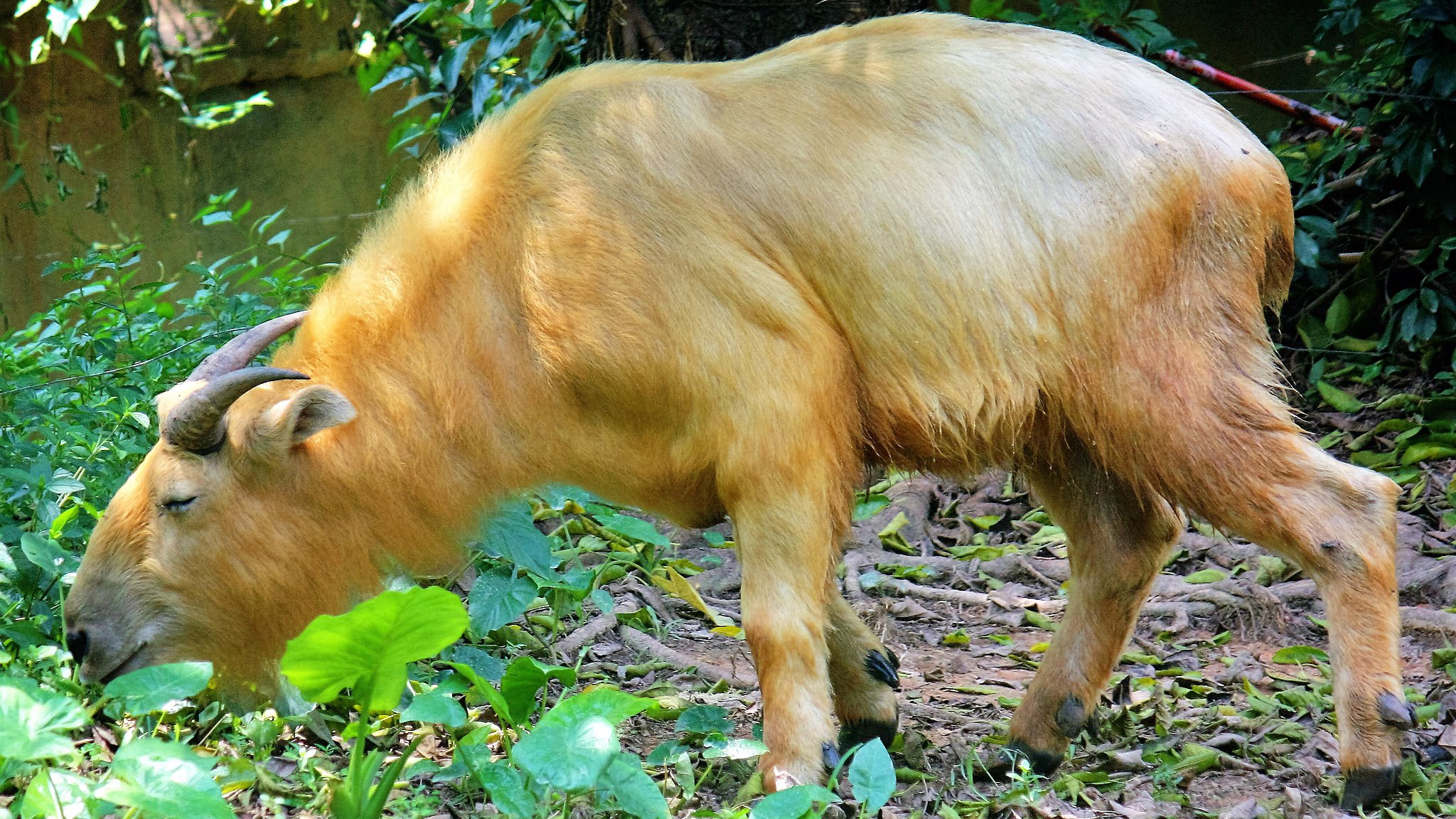
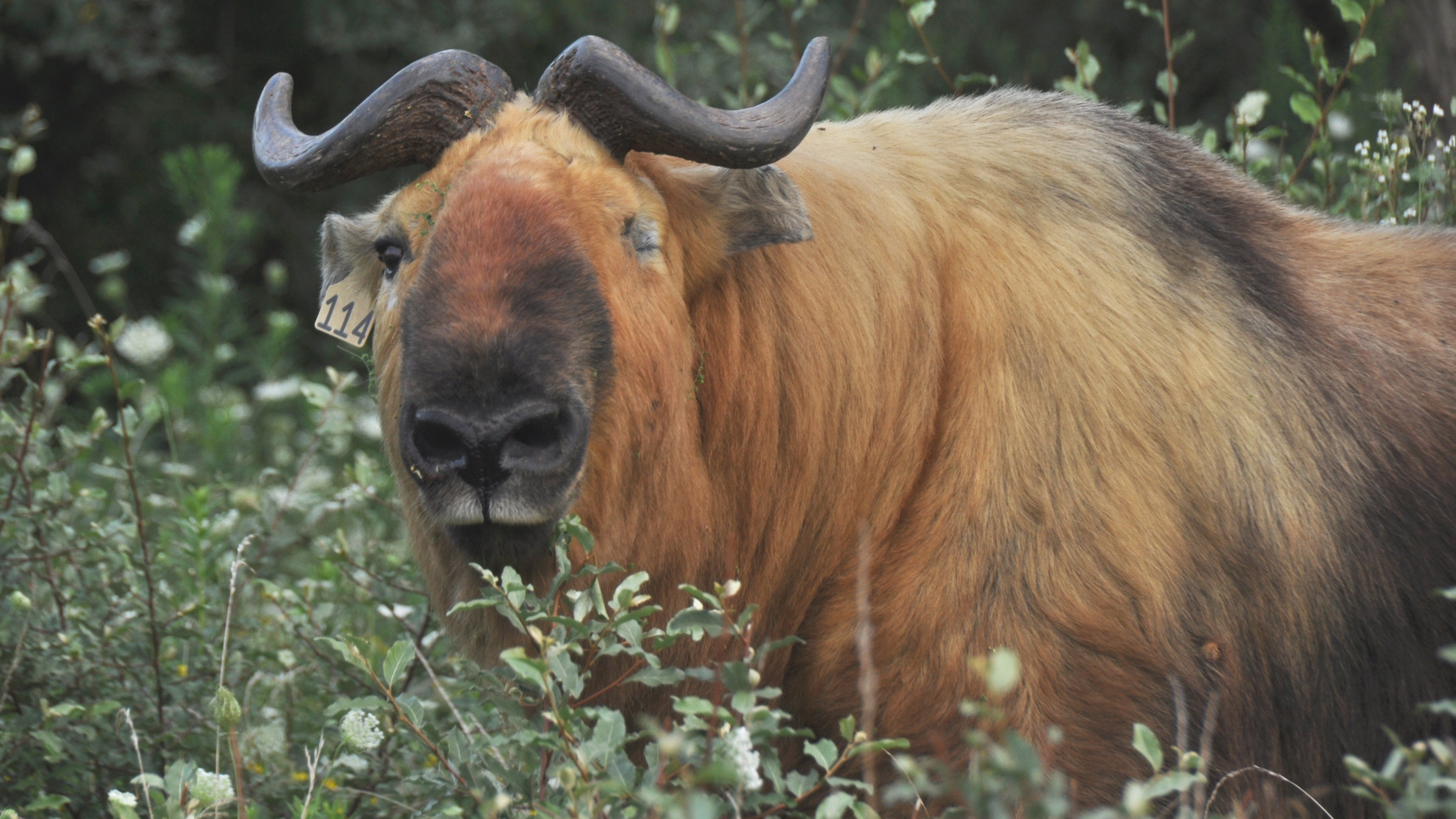

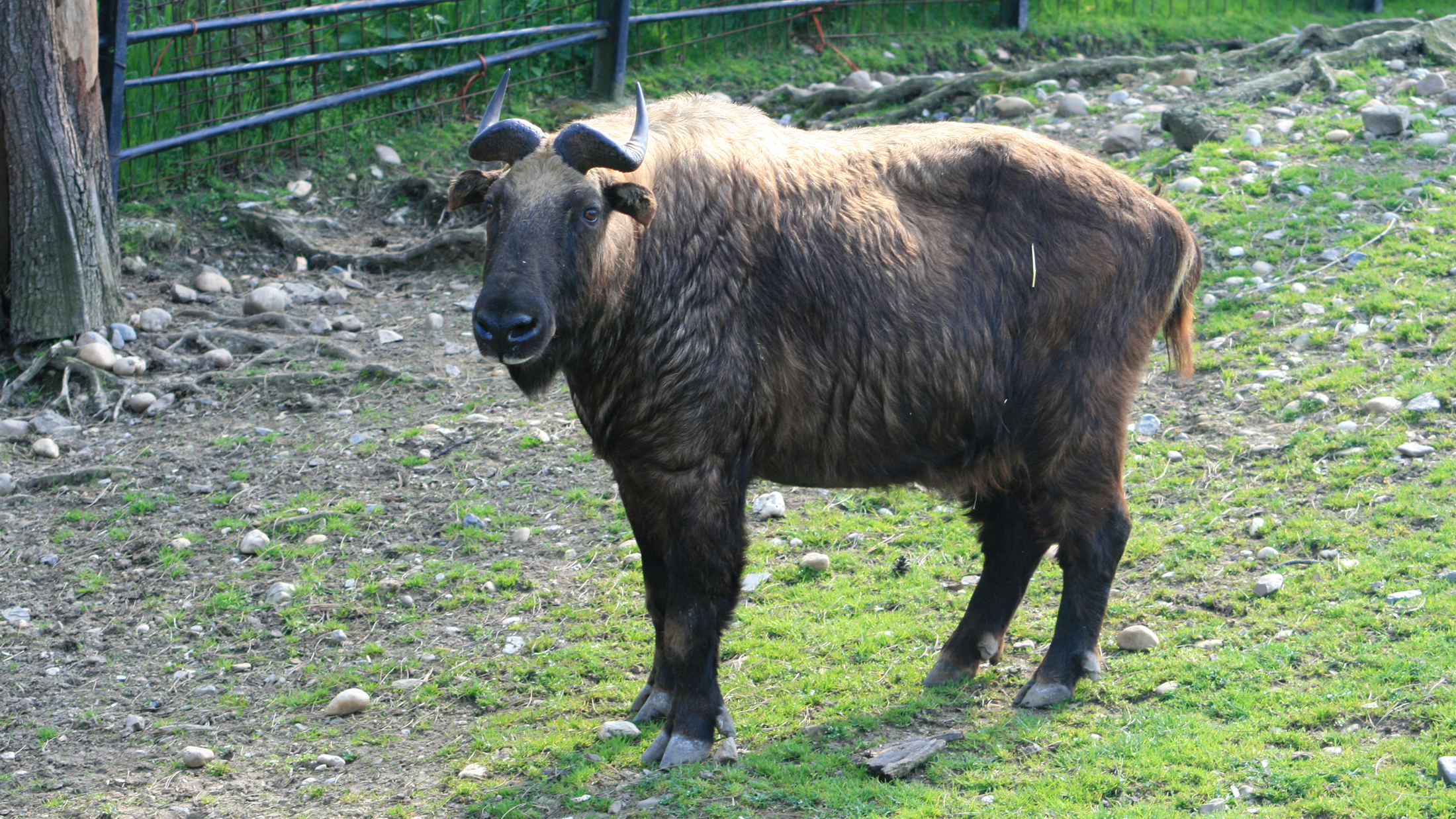
Takin coloration varies by habitat and subspecies (some taxonomists consider four subspecies to be separate species, but that’s an argument for another day). The most striking is the golden takin, a truly remarkable animal. A frequent claim on the blogosphere is that this golden pelt is the basis for the “golden fleece” of myth and legend. As science writer Darren Naish notes, there are other explanations for golden fleece, but no one can argue that the golden takin does indeed look like a creature from myth.
Takins eat a large variety of plants (one biologist counted 65 species in a Bhutan takin’s diet), including such seemingly unpalatable forage as rhododendron and evergreen trees. Takins travel trails to salt licks, which undoubtedly provide minerals but may also help neutralize plant toxins.
Wildlife research often is determined by the public’s interests and values. Elephants, tigers and white-tailed deer are thus heavily researched; takins much less so. Undoubtedly there is much to learn about these animals. Many accounts reference large male takins being aggressive, but this seems based as much on appearance as evidence.
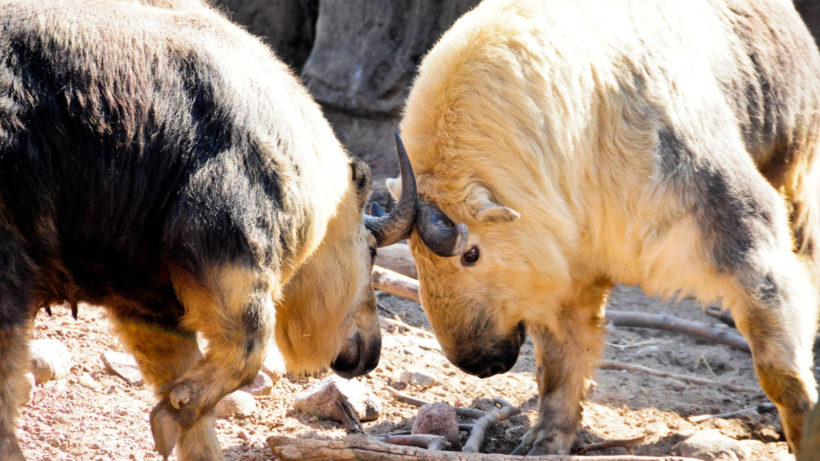
A reporter for National Wildlife witnessed male takins butting heads in a dramatic courtship battle, seemingly much like bighorn sheep. Male takins also vocalize during this time, and female and young takins have their own loud vocalizations. These are usually considered alarm calls. Research into the takin’s larynx reveals that the takin’s vocalizations are low frequency, ideal for projecting a call over long distances.
Many sources, including trip reports by amateur naturalists, report large herds of 50 or more takins congregating in the spring – likely family groups. Males may also gather in herds prior to the rut. As takins get older, they seem to become more solitary.
Throughout much of its range, the takin is endangered or vulnerable, largely due to habitat loss. In 2013, The Nature Conservancy in China initiated the 27,325-acre Laohegou Land Trust Reserve, the first such reserve in China. It links existing reserves, protecting important habitat for takins and other wildlife (including giant pandas).
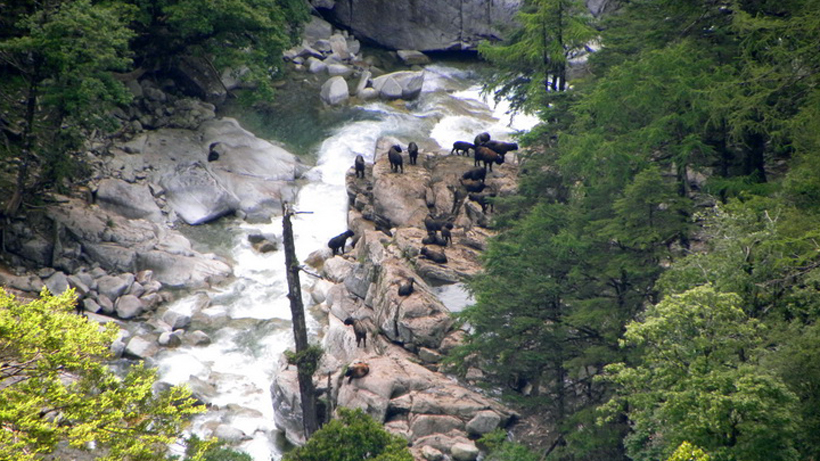
Hoofed mammals have been one of my longest and happiest obsessions. As a lifelong hunter, naturalist and mammal life lister, I find myself drawn to these large and often unappreciated beasts. Sometimes when I mention this passion to other conservationists, I get a response like “Don’t we know enough about the big creatures?”
A simple mention of the takin proves otherwise. Fortunately, stumping for hoofed mammals is not as difficult as advocating for moths or sea cucumbers. A growing network of rewilding advocates, weird wildlife enthusiasts and mammal watchers brings attention to the overlooked hoofed beasts.
I was thrilled this holiday season when my animal-obsessed nephew Noah, upon seeing a photo of a takin, immediately identified it (and he also recognized tarsiers, mandrills, and other obscure critters that even most of my conservation colleagues would not know. He has a bright future ahead as a mammal watcher).
I’d be as excited to see a large herd of takins emerging from a thicket of bamboo as I would be to see a giant panda. I’m serious. If you’re with me, welcome to the Ungulate Underground. Let’s work together to ensure that takins and other awesome, bizarre hoofed beasts continue to roam the world’s wild regions.
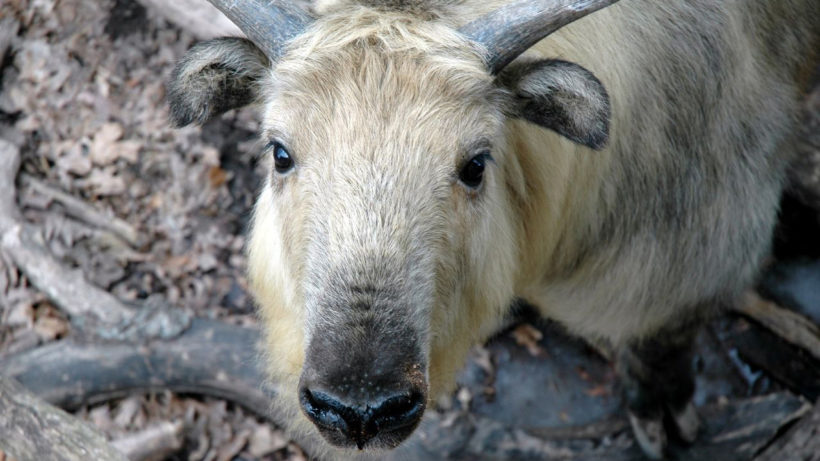
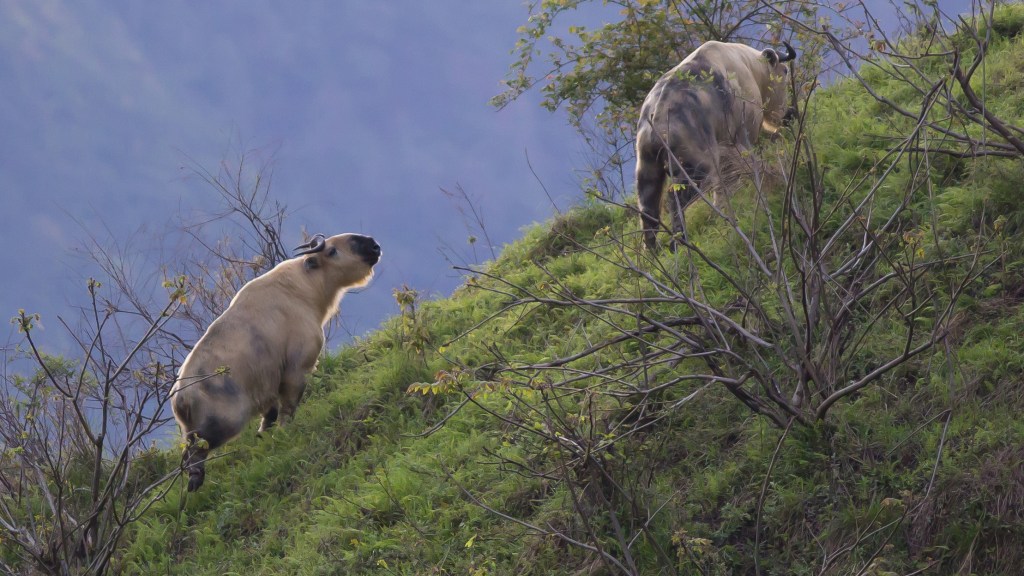



What are Takins used for? Can they be raised as cattle.?
Hi Charlene,
Thanks for your question. Takins have not been domesticated and are not raised like cattle.
Cheers,
Matt
Saw a takin calf on one of the zoo shows in Nat Geo. It was friends with a bactarin camel with a heart murmur and was absolutely adorable!
Wow! Saw a picture of a Takin on Instagram and did not believe it. Thought it was Star Wars (liked your analogy). So I googled it and it led me to your great article. I am 76 years old and thought I was cognizant of many of the mammals. But I was so wrong!
It is amazing and I did see that China has created a sanctuary for them.
Unbelievable and a well written article.
The Golden Takin is a very beautiful animal. This is the first time I have
seen this animal anywhere. Would it be possible to domesticate this mammal
and raise it in a small herd if the herd could live in a small bamboo forested area?
Is the animal dangerous at all? Or does it have a character that makes it approachable
by humans?
Allan Walker
Vancouver, British Columbia, Canada
My new adoration of Takins brings me to your writings. I am very interested in their herd behavior. They seem to be individual thinkers. Can you tell me more? Fran Bryant
Today I learned that there were Brown Pandas and a Marvelous creature called a Takin! Thank you for the Wonderful and DELIGHTFUL article about this fascinating critter! Of course it is the National Animal of Bhutan! What else could be?!? The remark about Dr Seuss made me laugh out loud. May you and your nephew have many delightful adventures together! As my Grandfather and I did.
can I have some inforamtion about the teeth of a takin
I was watching “Secrets of the Zoo” (Columbus) and I saw Takins for the first time. I had never seen nor heard of them. The show didn’t give much information about them, so I googled and found this article. They are truly fascinating. My first reaction was the same as some others, that they look somewhat like a Gnu. Their horns look like a smaller version of those on a Cape Buffalo. The zookeepers noted that they are very dangerous, especially with the herd.
What a wonderful “read”! I had never heard of these animals and was fascinated! They are quite beautiful and it is interesting to learn a little about their habits and life.,
Thank you for such a worthwhile article. I hope many read it and that you will write more. Thank you!
I think that are wonderful animals, and I will find out more about them. I’m very glad that China has moved to help them survive. Speaking as a big-schnozzed biped, I feel an affinity with the takin, and with the saiga, a more readily recognized animal.
Despite the male takin’s dubious personal grooming ideals, (shared by other better-known ungulate, I think). I think they are very attractive as a kind, and I hope they flourish.
Thank you for a lovely article.
T. O’Connell